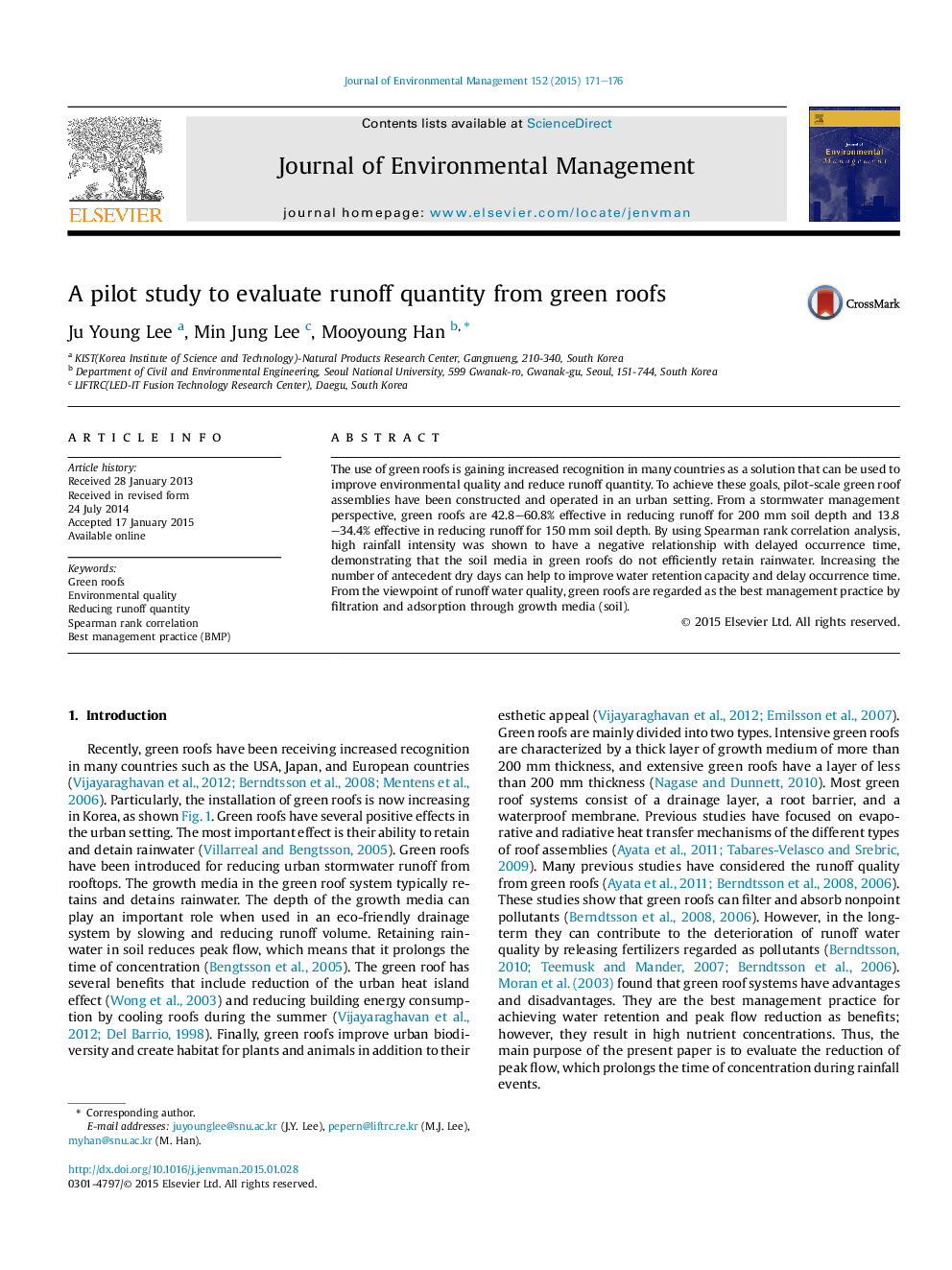| Article ID | Journal | Published Year | Pages | File Type |
|---|---|---|---|---|
| 7482587 | Journal of Environmental Management | 2015 | 6 Pages |
Abstract
The use of green roofs is gaining increased recognition in many countries as a solution that can be used to improve environmental quality and reduce runoff quantity. To achieve these goals, pilot-scale green roof assemblies have been constructed and operated in an urban setting. From a stormwater management perspective, green roofs are 42.8-60.8% effective in reducing runoff for 200Â mm soil depth and 13.8-34.4% effective in reducing runoff for 150Â mm soil depth. By using Spearman rank correlation analysis, high rainfall intensity was shown to have a negative relationship with delayed occurrence time, demonstrating that the soil media in green roofs do not efficiently retain rainwater. Increasing the number of antecedent dry days can help to improve water retention capacity and delay occurrence time. From the viewpoint of runoff water quality, green roofs are regarded as the best management practice by filtration and adsorption through growth media (soil).
Related Topics
Physical Sciences and Engineering
Energy
Renewable Energy, Sustainability and the Environment
Authors
Ju Young Lee, Min Jung Lee, Mooyoung Han,
